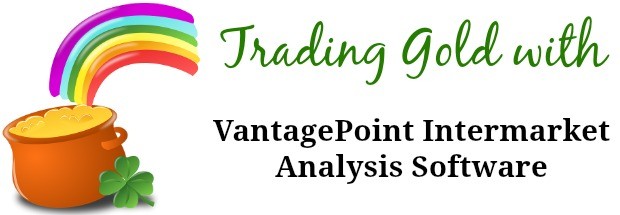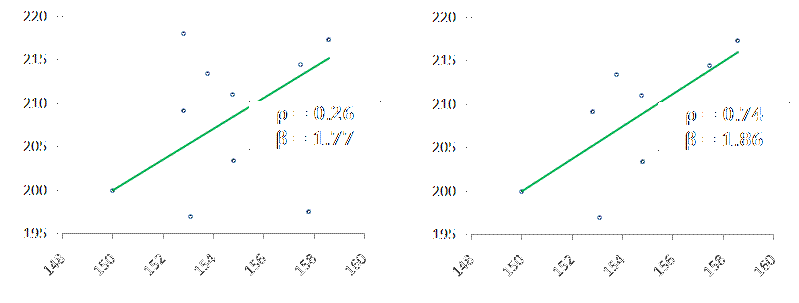CURRENCY CORNER CorrelationBased Forex Trading Strategies
Post on: 3 Июнь, 2015 No Comment

By: Adam Grunwerg
Understanding the principles of correlation will boost your prospects of achieving consistent forex success, writes Adam Grunwerg of Investoo.com .
Forex correlation is an in-vogue subject at present but what exactly is it all about? For instance, is it possible to merge any of the concepts of correlation into a forex trading strategy so that it can capture a consistent stream of profits?
Defining Correlation
So, what is this subject all about? Correlation measures the mutual relationship between any two assets over a specified time period. This parameter ranges between +1 (perfect positive correlation) and -1 (perfect negative correlation). Positive correlation implies that the directional movements of two securities are identical. In addition, larger positive numbers indicate that these movements are becoming increasingly closer. In comparison, negative correlation signifies that two assets move in completely opposite directions with increasing negative numbers implying more powerful divergences.
How Correlation Applies to Forex
Whenever you trade forex, you must comprehend that you are, in reality, buying and selling a combination of two currency pairs. These pairs consist of two currencies and its price is determined by dividing the value of one by that of the other. Once again, you must realize that you are actually generating two trades whenever you back a currency pair.
For instance, if you trade the EUR/USD long, you are purchasing the euro and selling the USD. Consequently, you would be creating a blunder if you considered that this trade is just based on one currency pair only. Instead, you must understand that you have initialized a business partnership with two currencies. This is crucial to appreciate so that you can recognize the correlation and interlinking of each one of these two currencies in relation to others.
For example, many investors prefer to diversify their investments as a way to decrease their risk exposure. However, before achieving this objective, you will find that it is a beneficial exercise to examine the currencies involved for any correlation, e.g. do they both climb simultaneously or do they normally move in diverse directions. Additionally, you must rapidly understand that currency correlations adjust with time and that even though two currencies may have advanced in one direction last night, they may not do so today. Consequently, you will have to check trends in correlation continuously.
The Benefits of Studying Correlation
Correlation can even assist you in determining if a trend of a currency pair is powerful and if it will continue to advance in its present direction. For instance, the EUR/USD and the USD/JPY often move in completely the opposite directions. If the EUR/USD is climbing, then the USD/JPY is dropping. As such, consider that you have decided to open a long EUR/USD trade because it has just broken above a crucial resistance level. Before doing so, you should examine the correlation of the USD/JPY to ascertain if it is just above an important support level. If so, then you would be well-advised to stall opening your EUR/USD position until you obtain evidence that the USD/JPY can also effectively plunge beneath its support level.

Forex and the Stock Markets
There also exists a strong correlation between the stock markets and currency pairs. As an example, if the Dow Jones industrial Average increases, then the higher-yielding currencies, such as the euro, GBP, and CHF usually climb at the same time against the low yielders, i.e. USD and JPY. The contrary is valid if the Dow Jones drops. By evaluating major currency pairs in the foreign currency market, you should quickly identify that many of their directional movements are very comparable. For instance, the EUR/USD and the EUR/ JPY have a tendency to move in an identical direction and, as a result, demonstrate a high degree of correlation.
Why is this? In both cases, you are buying the EUR and selling the USD and JPY in long trades. By examining the trading patterns of the USD and the JPY, you will notice that both move in the same direction against the EUR. In the comparison of two currency pairs, you should ideally have a total of four currencies influencing the relationship. In order that one particular currency is not overstated, it is vital that all four currencies, regardless of whether they are being bought or sold, should appear only once in this relationship.
Correlation and Time
As already mentioned, as the correlation between currencies alters over time, it is therefore vitally important to regularly track changes in this parameter. Forex traders are usually advised to monitor the three-month and one-year correlation patterns of those currencies of interest on a regular basis so that they can gain a better sense of their historical patterns. Understanding correlation can allow you to more effectively manage and diversify your investment portfolio.
In conclusion, correlation studies currencies by identifying how comparable their directional movements are. An increased negative correlation generates a powerful signal that two currency pairs are moving in the opposite direction. Consequently, your prospects of profit may be drastically jeopardized if you do not fully appreciate this fact. In contrast, a positive correlation value signifies that two currency pairs are advancing in exactly the same direction supplying you with outstanding prospects of attaining profits from both. As such, comprehending the principles of correlation will definitely boost your prospects of achieving consistent forex success.














